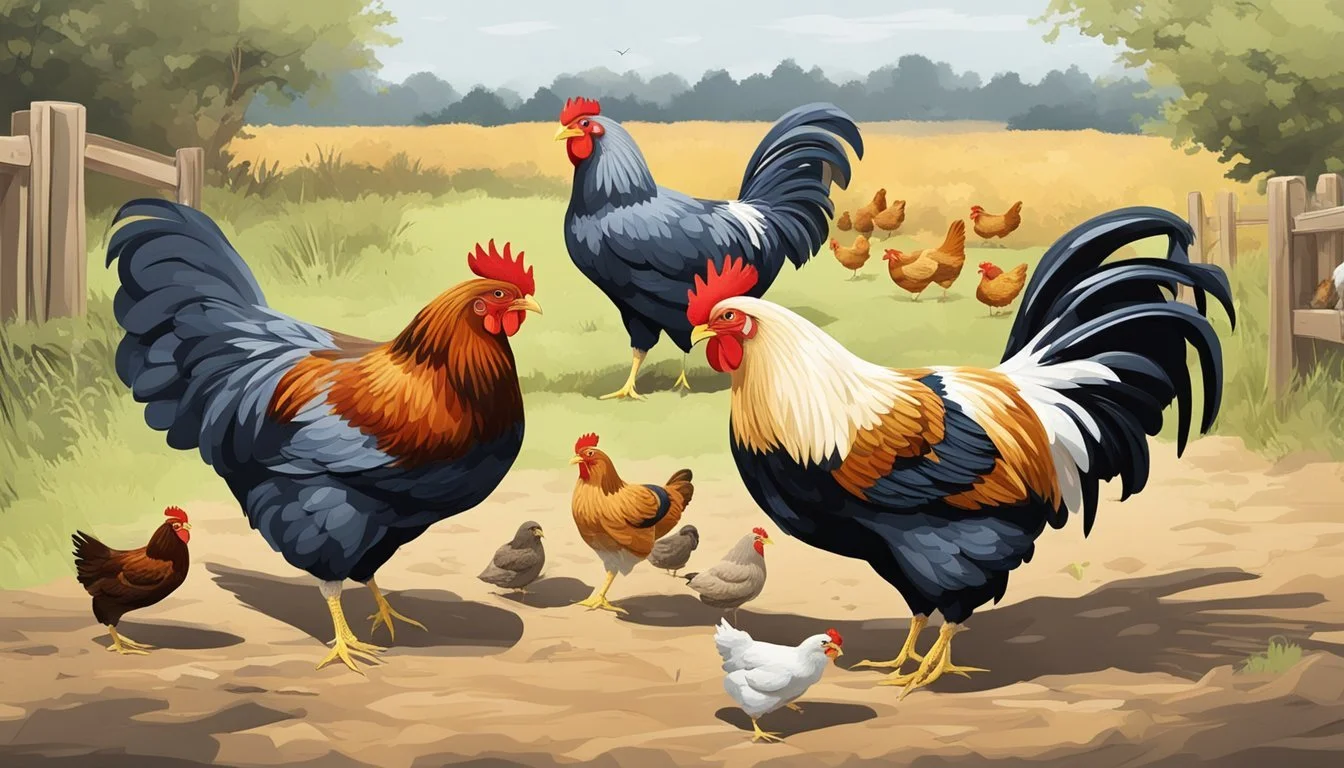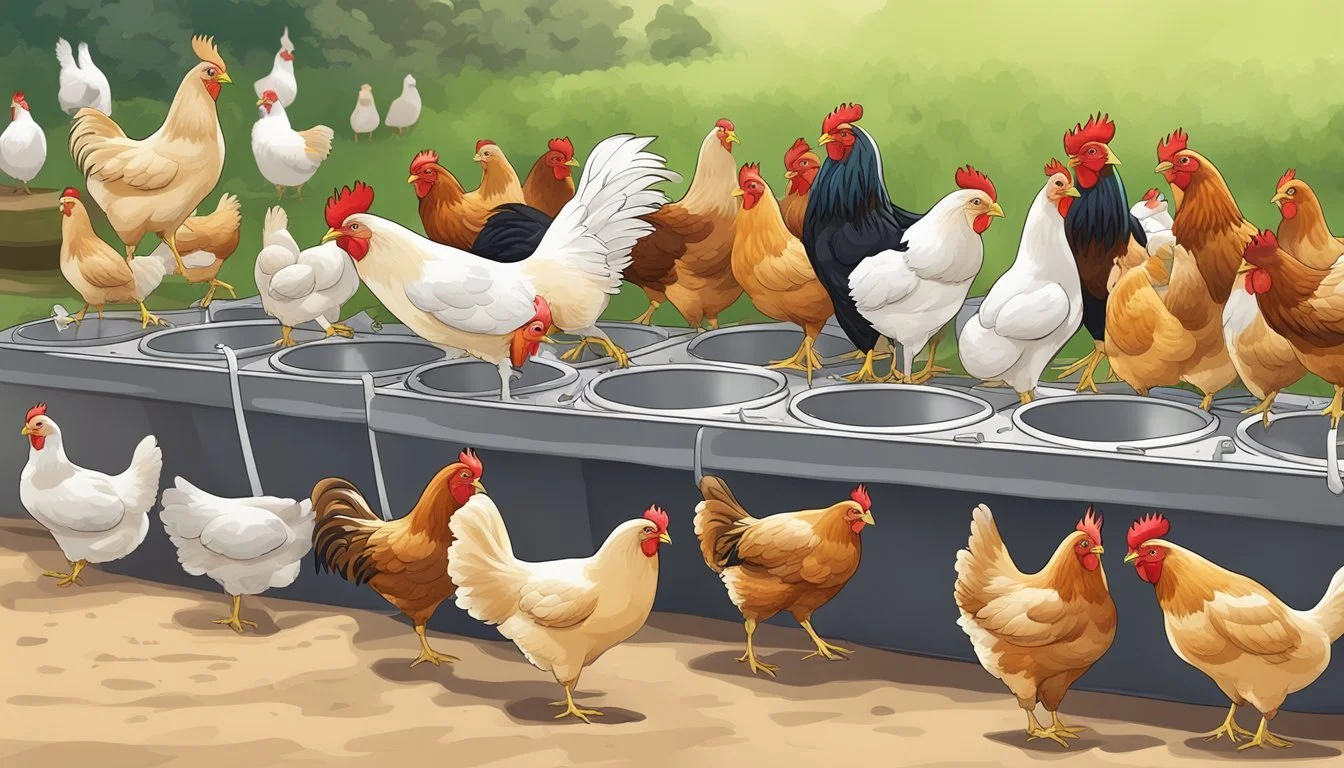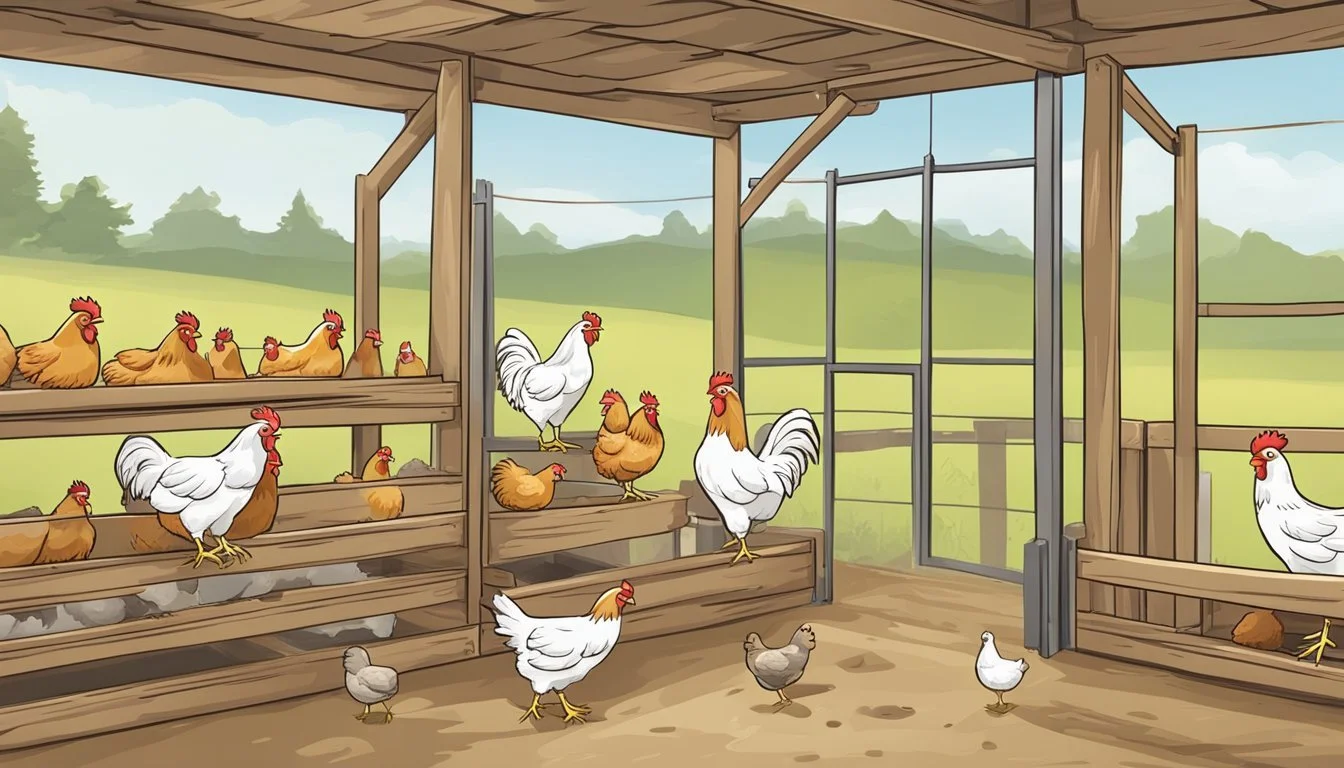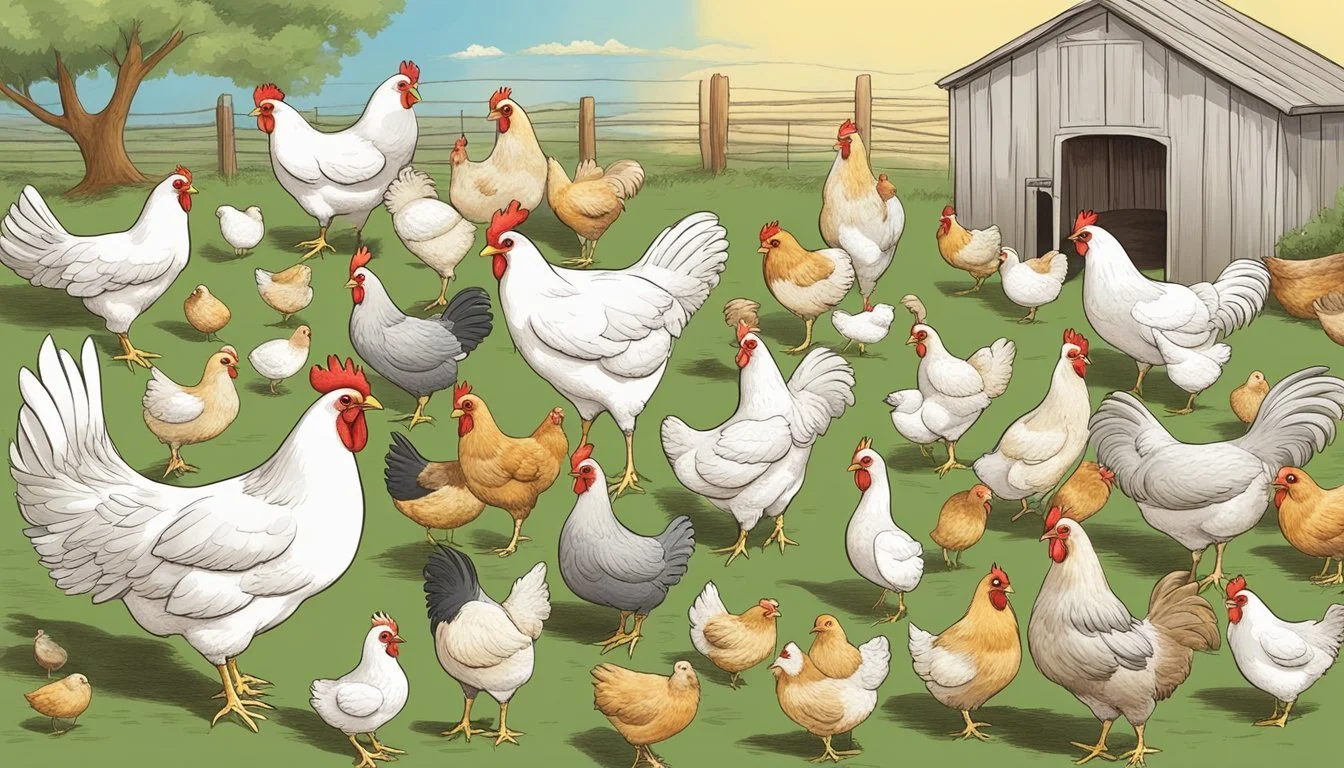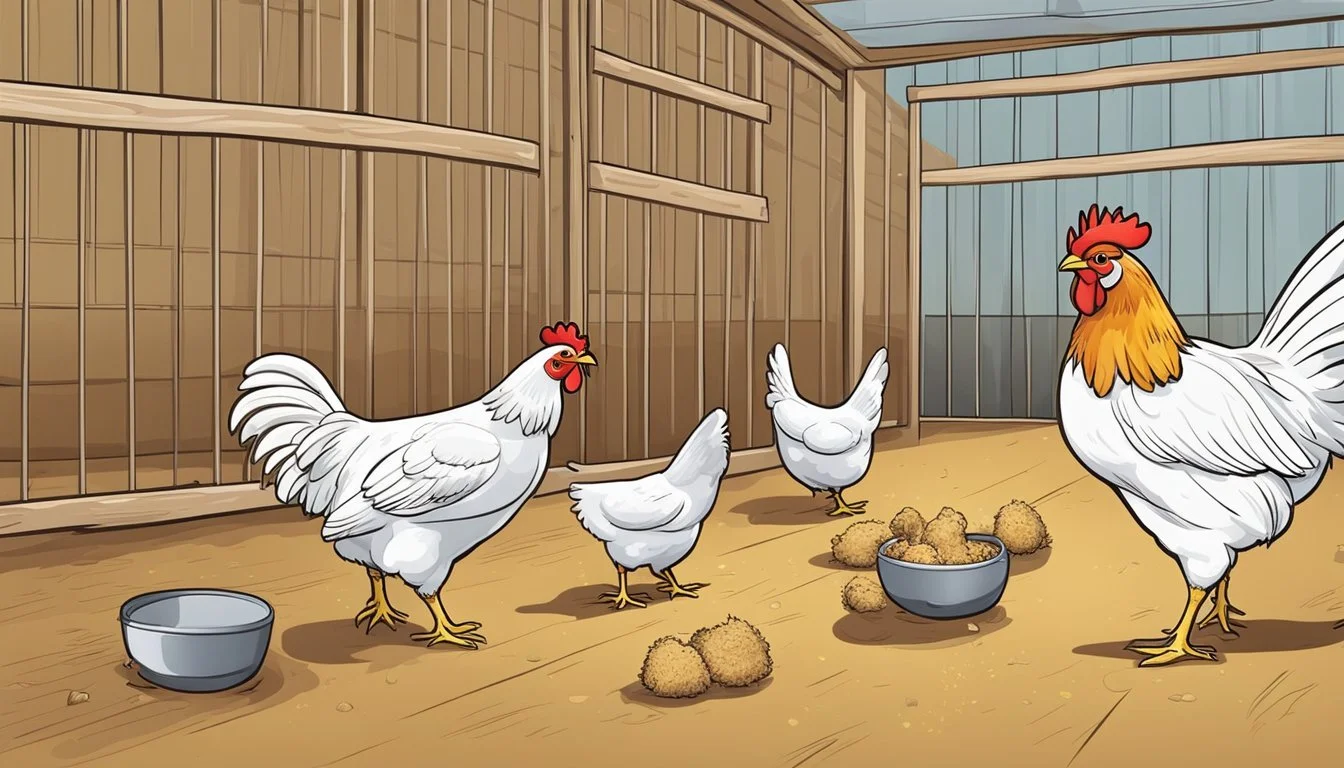What Are the Best Practices for Feeding Chickens in Different Life Stages
Age-Specific Nutritional Guidelines
Raising healthy chickens requires an understanding of the nutritional needs at different stages of their lives. From hatchlings to mature layers, each phase demands specific dietary considerations to ensure optimal health, growth, and egg production. Early life stages call for a high protein diet to support rapid growth, whereas adult birds require balanced nutrition to maintain their wellbeing and egg-laying capabilities.
For chicks, a starter feed rich in protein, usually ranging from 18-20%, is essential to kickstart their development. As they transition to pullets, their protein needs slightly decrease, and the introduction of grit helps with digestion of their growing variety of foods. Once chickens reach laying age, typically around 18 weeks, their diet shifts to include layer feed containing added calcium, crucial for strong eggshells.
Careful attention to these feeding practices ensures chickens get the right nutrients at the right time, creating a foundation for a healthy flock. Adapting feed types and portions as chickens grow from peeping chicks to robust layers is key to supporting their longevity and productivity.
Understanding Chicken Life Stages and Feeding
Chicken care requires a keen understanding of the different life stages of poultry and their respective diet and nutritional requirements. When raising chickens, it is critical to tailor feeding habits to meet their needs at each stage for optimal health and productivity.
Chick Stage (0-6 weeks): During this period, chicks require a starter feed high in protein to support rapid growth. Protein contents of around 18-22% are ideal and thus, one should provide a chick starter feed specifically formulated for this lifecycle phase.
Age: 0-6 Weeks
Feed Type: Starter Feed
Protein: 18-22%
Age: 6-20 Weeks
Feed Type: Grower Feed
Protein: 14-18%
Age: 20+ Weeks
Feed Type: Layer/Breeder Feed
Protein: 16-18%
Grower Stage (6-20 weeks): As chickens transition into the grower stage, their protein needs decrease slightly. Grower feeds typically contain 14-18% protein. These feeds encourage continued growth without accelerating it too rapidly, which can lead to health issues.
Laying Stage (20+ weeks): When hens begin laying, the focus shifts to maintaining their health and egg production. Layers require a feed with 16-18% protein and increased calcium to support eggshell formation. Specialty layer feed is available to meet these needs.
Chickens benefit from regular feeding schedules, and poultry keepers should always ensure access to fresh water. Additionally, when providing supplemental food such as kitchen scraps, one must avoid items high in fat, sugar, or salt. With the right feeding practices, chickens can thrive through their life stages, contributing to a rewarding chicken-rearing experience.
Starter Feed for Chicks
When raising chicks, providing the right starter feed is crucial for their early development. This feed ensures they receive essential nutrients needed for growth and immune system development.
Nutritional Composition for Starters
Starter feed for chicks typically contains a protein content of 18-20%, essential for proper growth and development. It's fortified with vitamins, amino acids, and minerals, such as calcium, which contribute to bone formation. In climates or conditions prone to coccidiosis, medicated starter feed with coccidiostats can be administered to prevent this disease, which can affect the chick's digestive system.
Protein: 18-20%
Fat: Optimal levels for energy
Vitamins: A, D, E, and K
Amino Acids: For tissue development
Minerals: Calcium and phosphorus for bone growth
Salt: Required in small amounts
Feeding Frequency and Amount for Chicks
From hatch to about 18 weeks of age, baby chicks require starter feed as their main diet. They should have constant access to food, allowing them to eat as frequently as needed, which facilitates steady growth. The amount of starter feed chicks consume will increase as they grow—from a few grams a day when newly hatched to up to 120 grams per day as they approach 18 weeks. It's also essential to provide a continuous supply of clean water and chick-sized grit if they have access to food other than their crumbles to aid digestion.
Feed Availability: Unlimited, to encourage natural feeding behavior
Water: Fresh and clean, replenished regularly
Grower Feed for Developing Chickens
Growing chickens have specific nutritional requirements to support their rapid development. A proper transition from starter feed to grower feed is crucial to meet these needs, particularly focusing on the balance of protein, vitamins, and minerals without excessive calcium.
Transitioning from Starter to Grower
Chickens typically transition from a starter feed to a grower feed at about 6-8 weeks of age. This change is necessary as grower feed contains a reduced protein content—generally between 14% and 18%—adequate for this stage of growth without the higher levels found in starter feed, which are designed for the initial intense growth phase of chicks. The format of the feed may vary, with options including pellets, mash, or crumbles; the crumbled form is often preferred due to easier consumption by the young birds.
Balance of Nutrients for Growth
A grower ration is formulated to ensure a steady and healthy weight gain and development of the skeletal and muscular systems in a growing chicken. It contains a balanced amount of necessary vitamins and minerals, and is designed with lower levels of calcium compared to layer feed to avoid potential kidney damage and other health issues. Grains and other ingredients provide essential nutrients and energy, but it’s important to ensure that the diet is not calcium-rich to prevent long-term health complications. Feeding chickens this specially designed grower feed supports their growth while preparing their bodies for later stages of life.
Layer Feed for Laying Hens
When it comes to laying hens, a balanced diet optimized for egg production and the inclusion of calcium-rich feed components are imperative for healthy flocks and high-quality egg output.
Optimizing Egg Production
Layer feed is designed to provide laying hens with the necessary nutrients to maintain their health and maximize egg production. It typically contains a mix of proteins, fats, and carbohydrates, along with essential vitamins and minerals. A laying hen’s diet should contain about 16-18% protein for optimal egg production. Feeder space is also crucial; every hen should have enough space to eat comfortably to maintain consistent nutrient intake.
Importance of Calcium in Layer Diets
Calcium is a critical component for shell strength in eggs. Laying hens’ diets should be supplemented with sources of calcium such as oyster shells or crushed eggshells. The recommended amount of calcium for laying hens is usually about 3.5 to 4.0%, which can be provided by including a calcium supplement in their regular feed. It's important for these supplements to be offered in a separate feeder, allowing hens to consume as needed according to their individual requirements.
Feed for Broilers and Meat Birds
Broilers and meat birds have specific dietary needs to support their rapid growth and development that differ from layers or other poultry. These birds require high-energy and protein-rich diets to achieve optimal weight gain and maintain overall health.
High Energy and Protein Requirements
Broilers and meat birds thrive on a high-energy diet rich in proteins and fats to fuel their swift growth. Early in life, they are typically fed a starter feed that is formulated to provide a protein content ranging from 20% to 24%. This initial feed supports the critical beginning stage of development where foundation for muscle and body structure is laid.
As they progress in age, the feed transitions to a grower feed that maintains a slightly reduced protein level, usually around 18% to 20%, which still supports robust growth but adapts to their changing nutritional needs. The transition to grower feed usually occurs around three to four weeks of age. Key nutrients, including amino acids like lysine and methionine, are also crucial in these feeds to support muscle development and overall health.
For ease of consumption and to ensure consistent nutrient intake, broiler and meat bird feeds are often pelleted. Pellets also reduce feed wastage and help to prevent selective eating of the grains. A consistent feeding regimen is essential to sustain the growth rate of broilers, requiring quality commercial feed where the nutritional balance is optimized for these types of birds.
Feeding for Optimal Weight and Health
Managing feed intake to promote optimal weight gain and health is key in raising broilers and meat birds. Meat chickens grow quickly and can be susceptible to health issues if their weight gain is too rapid or if they are overfed.
To prevent this, feeding schedules can be implemented, especially after the first three weeks. Limiting feed to 12 hours on and 12 hours off can manage growth to safer, more sustainable levels. Despite the restricted feeding times, the chickens must always have access to fresh water.
Ensuring that the feed provided contains the appropriate energy (calories from fats), along with necessary vitamins and minerals, is critical for supporting the well-being of meat birds throughout their lifespan. It is also important to choose a feed that is honed for broilers and meat birds, which often means selecting a feed that is free from fillers and low-quality ingredients.
Selecting the right type of chicken feed – either a specially formulated commercial feed or a quality organic option – and adhering to recommended feeding practices is essential. Feed composition directly affects the growth rate, health, and the overall quality of the final poultry product.
Nutritional Additions and Supplements
Ensuring chickens receive a balanced diet is critical for their health and productivity. Careful consideration of nutritional additions and supplements can support each life stage from growth through to egg-laying.
Vitamins and Minerals Supplements
Chickens require a mix of vitamins and minerals for optimal health. Vitamins A, B, D, E, and K are vital for immune system function, energy conversion, and bone health. Supplements like vitamin D are particularly important for layer hens as it aids in calcium absorption, crucial for strong eggshells. Minerals like calcium and phosphorus are also essential. Oyster shell supplements can be offered to layers to enhance their calcium intake, improving egg production and shell quality. Grit, while not a direct source of nutrients, is important as it aids in digestion, allowing chickens to break down their food and absorb these vital nutrients effectively.
Vitamins needed: A, B, D, E, K
Mineral supplements: Oyster shell (Calcium), grit (Digestive aid)
Particularly for layers: Vitamin D for calcium absorption
Protein-Rich Treats and Extras
Protein is crucial in all stages of a chicken’s life, with increased needs during periods of growth, molting, and egg-laying. Offering mealworms or worms as treats provides a high-protein snack that also encourages natural foraging behavior. Other protein sources can include seeds, certain fruits, grains, and food scraps, which should be given in moderation. Layer feed typically contains added protein to meet the demands of egg production. While treats can supplement a chicken's diet, they should not exceed 10% of their total food intake to avoid dietary imbalances. Nutritious greens and food scraps can also be given as treats to encourage foraging and provide additional nutrients.
High-protein treats: Mealworms, seeds, food scraps
For layers: Additional protein in layer feed for egg production
For foraging: Grains, greens, and appropriate food scraps
Feeding Practices for Healthy Chickens
Proper feeding practices are essential to the health and productivity of chickens. Attention to feeder design and placement, as well as consistent hydration, can impact a chicken's ability to meet their nutritional needs at different life stages.
Feeder Types and Placement
Feeder Types: There are various types of feeders available that cater to the eating behaviors of chickens. Trough feeders are suitable for a flock of any size, promoting easy access and helping to minimize food waste. Hanging feeders can save space and deter pests. For feeding chicks, specialized chick feeders that prevent spillage and contamination are recommended.
Placement: It's critical to place feeders in a location that is dry and protected from the elements and pests. Feeders should be positioned at back height to the chicken to ensure comfortable access and reduce the scattering of feed.
Hydration and Water
Clean Water: Chickens require constant access to fresh water. The water should be clean, cool, and refreshed daily to avoid the growth of harmful pathogens. In warmer climates or seasons, it's crucial to check water levels more frequently.
Waterers: There are several types of waterers: traditional basin types, nipple waterers, and automatic systems. Nipple waterers or automatic waterers are effective in keeping the water free from debris and can reduce labor for the caretaker. Water sources should be placed at a height accessible to the chicken and away from feeders to prevent contamination.
By ensuring the correct type and placement of feeders and providing a steady supply of fresh, clean water, caretakers can support the health and well-being of their chickens throughout their lifespan.
Homemade and Alternative Chicken Feeds
Creating homemade and alternative chicken feeds allows poultry owners to customize the diet of their flock according to their specific nutritional needs during different stages of development. By formulating their own feeds or incorporating kitchen scraps and garden produce, they can ensure a well-balanced and varied diet that supports the health and productivity of their chickens.
Formulating Your Own Chicken Feed
When preparing homemade feed, one must consider the appropriate balance of protein, carbohydrates, fats, vitamins, and minerals required for their chicken's development and egg production. A common recipe might include ingredients such as corn, wheat, and peas. According to guidelines provided by The Happy Chicken Coop, a simple feed mix for a 20-pound batch could consist of:
30% Corn — Provides energy
30% Wheat — Supplies carbohydrates and some protein
20% Peas — Offers protein
Ensuring the correct proportions of each ingredient is critical to avoid nutrient deficiencies. Additionally, some owners opt to create fermented feed, which involves soaking grains to improve digestibility and enhance nutrient absorption, a practice detailed by Backyard Poultry.
Using Kitchen Scraps and Garden Produce
Incorporating table scraps and garden produce into a chicken's diet can be an excellent way to provide variety and essential nutrients. Chickens can enjoy a range of fruits and greens in moderation as part of their diet. However, it's important to ensure that scraps are free of any potentially harmful foods, such as chocolate, avocado, or anything moldy.
The types of feed and frequency when offering kitchen scraps should be considered carefully to prevent an imbalance in the overall diet. When done correctly, using these alternative feed sources encourages natural foraging behaviors and contributes to the overall health of the backyard flock.
Managing Feeding for Special Conditions
Effective feeding management for chickens requires particular attention during specific scenarios such as molting and health challenges. The goal is to support the flock through these periods with a focused diet that addresses their altered nutritional needs.
Molting and Reduced Egg Laying
Molting, the process where chickens shed and regrow feathers, results in reduced egg laying. It's vital to adjust their diet to support feather regrowth and maintain health. During this period, an increased intake of protein is necessary, as feathers are primarily made of protein.
Recommended Dietary Adjustments:
Increase protein content to 16-18%
Include vitamin supplements like Biotin for feather development
Reduce energy foods, like grains high in fats, to prevent excessive weight gain while egg laying is low
Protein-rich feeds, such as mealworms or a higher protein layer feed, can help hens through the molting process.
Preventing and Addressing Health Issues
Health issues in chickens like feather picking, egg eating, and cannibalism often stem from nutrient deficiencies or stress. A balanced diet is paramount to prevent such behaviors and bolster the flock's overall health.
Dietary Preventive Measures:
Ensure a balanced intake of vitamins and minerals
Incorporate grit into the diet to aid digestion
Provide ample feeder space to prevent competition and stress
To counteract disease, maintaining hygienic feeding practices and using diet to strengthen immunity is essential. A diet with balanced vitamins and trace minerals, like selenium and zinc, supports robust immune responses.
Chickens facing health issues may also benefit from an increased supply of vitamins A, E, and C and minerals like electrolytes in their water. The inclusion of these specific supplements can aid in recovery and resilience against pests and predators that exploit weakened birds.
Seasonal and Age-Related Feeding Adjustments
When feeding chickens, understanding the importance of adjusting their diet according to both seasonal changes and different life stages is crucial. It is essential to provide a balanced diet that meets the protein and calcium needs of chickens as they age and as the seasons impact their physiological requirements.
During colder months, chickens will conserve energy for warmth and might require a diet higher in calories. On the other hand, in the warmer seasons, they tend to eat less and will forage more, if they are free-ranging. Adjustments should accommodate these seasonal variances to ensure optimal health and egg production.
In terms of age, chicks start with a high-protein starter feed, which is crucial for their rapid growth. As they progress to pullets, their diet changes to a grower feed which still supports growth but has less protein than the starter. Once chickens reach approximately 18 weeks or start laying eggs, they should be transitioned to layer feed, rich in calcium to support eggshell formation.
Age Group: 0-6 Weeks
Diet Type: Starter Feed
Protein: High
Calcium: Low
Age Group: 6-18 Weeks
Diet Type: Grower Feed
Protein: Medium
Calcium: Low
Age Group: 18+ Weeks
Diet Type: Layer Feed
Protein: Lower
Calcium: High
Chickens also require grit to help digest their food since they do not have teeth. The size of the grit should be appropriate for the chicken's age. Additionally, all chickens benefit from dietary variety and enjoy treats; however, these should be provided in moderation to avoid nutritional imbalances.
Feeding frequency may also change with the seasons; they may require more frequent feeding in winter to maintain body temperature. In contrast, during summer, chickens can benefit from the foraging opportunities of their environment, which can reduce the dependence on supplemental feeds.
Adopting these best practices will promote the health and productivity of chickens through each life stage and across the varying seasons.
Legal and Ethical Considerations in Chicken Feeding
When addressing the legal and ethical considerations of feeding chickens, one must be aware of the health and welfare regulations that govern animal husbandry practices. Food safety is paramount; thus, chicken diets should be free from contaminants and provide complete nutrition appropriate for their life stage. The use of medicated feed is strictly regulated to ensure human food safety and to prevent the unnecessary administration of medications to flocks.
Producers are expected to adhere to guidelines stating chickens must have access to sufficient space for natural behaviors such as dust bathing and preening. Feeding practices should support their well-being, as detailed by entities such as the National Chicken Council.
Life Stage: Chicks
Feed Type: Starter feed
Considerations: A protein-rich diet to support rapid growth, non-medicated unless necessary.
Life Stage: Pullets & Hens
Feed Type: Layer feed
Considerations: Balanced for egg production, typically with added calcium.
Life Stage: Broilers
Feed Type: Grower and finisher feed
Considerations: Higher in energy, suited for muscle growth.
The usage of organic feed is governed by strict guidelines ensuring the absence of synthetic substances and genetically modified organisms, aligning with consumer preferences for organic poultry products.
Adherence to these considerations ensures producers conduct ethical poultry production, reflecting their responsibility to both animal welfare and public health. It is critical that all practices comply with the latest regulations enforced by relevant agricultural and food safety authorities to maintain trust and sustainability in poultry production.
Conclusion
Proper nutrition is crucial for the health and productivity of chickens at every stage of their life. For the best outcomes in egg production, growth, and general well-being, a tailored diet is indispensable.
Chick Starters: Essential for the first weeks, high in protein to support rapid growth.
Grower Feeds: Follows starter, slightly reduced protein.
Layer Feeds: Rich in calcium, begins at onset of laying.
Feed selection must align with the growth stages to prevent health issues—too much calcium for young chicks can harm development, while laying hens require it for strong egg shells.
Grit should accompany chicken feed—it aids digestion, a critical aspect of nutrient absorption. Mixing feed types or offering the wrong feed can lead to nutritional imbalances and affect productivity.
It's also beneficial to integrate foraging opportunities with a regular feed schedule, granting exercise and additional nutrients.
In raising chickens, dietary monitoring is as vital as providing clean water and shelter. This comprehensive approach ensures a balance of proteins, carbohydrates, and fats, tailored to life stages, enhancing chickens' vitality and longevity.
For more detailed guidance, including specific dietary requirements and schedules, visiting dedicated resources like BackYard Chickens and The Chicken Chick® can augment poultry keepers' knowledge.

